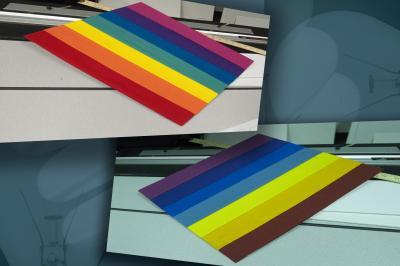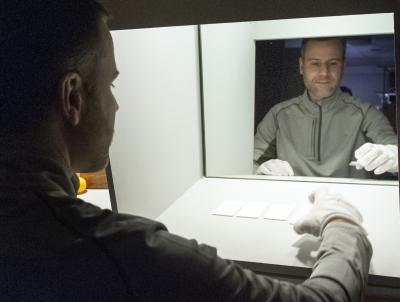If you have ever seen set pieces from a science-fiction show, you have probably been amazed at how cheap and silly the whole things looks. That was the initial concern with high-definition television too. Standard definition hid a lot of cosmetic defects in people and things that are quite obvious in the real world.
Lighting can do the same thing in the real world, of course. Everyone has had a table in their place that looked fine, only to open the windows and have natural light reveal a layer of dust.
In better light, even your clothes won't look as white. For years, companies have been adding whiteners to laundry detergent, paints, plastics, paper and fabrics to make whites look whiter, which worked fine for incandescent and fluorescent lighting, but light-emitting diode
lights (LEDs) are another matter. Want to see how gray your 15-year-old white t-shirt is? Wear it outside. And now it may be more noticeable inside too. Or it may not. That is the trick of light.
LED bulbs will make colors pop but the vast majority do not showcase or differentiate the appearance of white products, because all white light is not the same.

A rainbow pattern as seen under a long-linear, fluorescent light source common for commercial interiors (top). And, the same rainbow pattern as it appears under a non-commercial, fluorescent light source (bottom). The color differences result from the use of different phosphors in the lights glass tubing. Credit: Patrick Mansell
Different light sources contain different combinations of the wavelengths of light. A broad variety of wavelengths will create light that appears white to the human eye, but different mixtures of wavelengths will affect how colors are rendered.
When it comes to seeing the color white, the light source is very important because of how product manufacturers make white products appear white using whiteners.
Whiteners contain fluorescent materials that glow under violet and ultraviolet light. Sunlight, fluorescent light and incandescent light all produce some light in the violet and ultraviolet range. The whiteners used in consumer products work under those conditions, resulting in a bright white perception. But most current LED bulbs use blue LEDs to excite a phosphor that then glows white, but produces no violet or ultraviolet light.
Kevin W. Houser, professor of architectural engineering, Penn State, working with a Penn State student and researchers from Soraa Inc. of Fremont, Calif., asked 39 participants to observe various combinations of light sources and white objects to see how the light source affected perceptions of white.
The participants completed three tests -- selection, forced choice and sorting -- using five different light sources -- a blue-pumped LED, filtered halogen lamp and three violet-pumped LEDs with differing levels of violet emissions.

Kevin Houser, Professor of Architectural Engineering at Penn State, sorts cards in a light box in the departments illuminating engineering lab for observation under several light sources. Credit: Patrick Mansell, Penn State
In the sorting experiment, the researchers placed six calibrated whiteness cards of varying whiteness on a table in a booth enclosed on three sides. They asked participants to arrange the cards in order of whiteness under each of the five light sources.
Under the halogen light and violet-pumped LED lights with 7 and 11 percent violet emission, the order was correct. Two of the cards were flipped under violet-pumped LEDs with only three percent violet emissions.

This shows the same set of white cards as seen under a violet-pumped light emitting diode (LED) top, and under a blue-pumped LED below. Credit: Patrick Mansell, Penn State
"With the LED but only blue pumping the phosphors, the order became random," said Houser. "People simply couldn't tell the difference between the cards. Under the blue-pumped LED, which is notable because blue-pumped LEDs are by far the most common type for general lighting."
In the forced choice test, two nominally identical cards were placed in each of two booths containing different light sources. Participants were asked to choose the card that was whiter under all of the permutations of each of the five light sources.
"The light sources with higher violet component permitted the best discrimination between the targets," said Houser.
In the selection test, researchers asked the participants to look at a reference card in one booth and rank the cards in a second booth as either as white or whiter than the reference card. Again the blue-pumped LEDs did not fare well.
The researchers note that "engineering of an LED source's spectrum is necessary for an accurate rendering of whiteness."





Comments